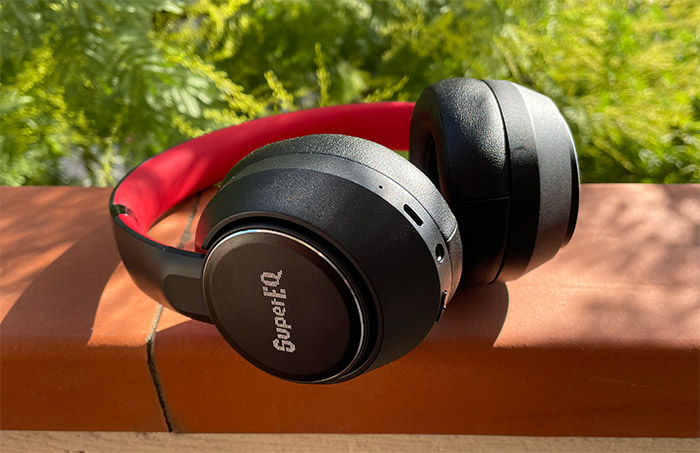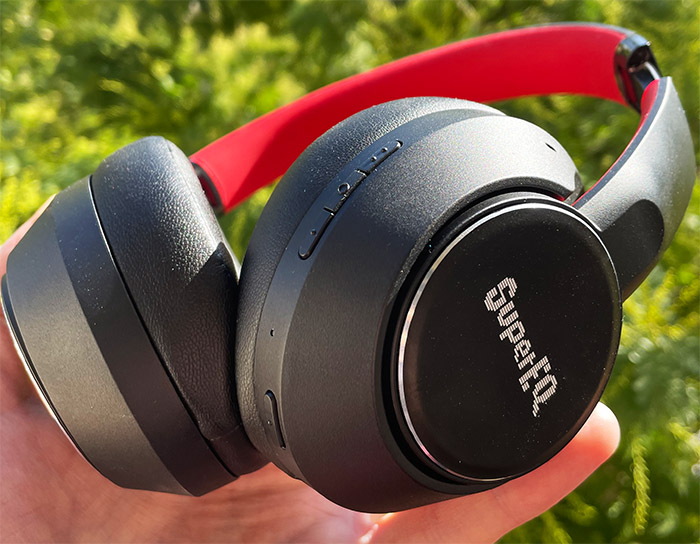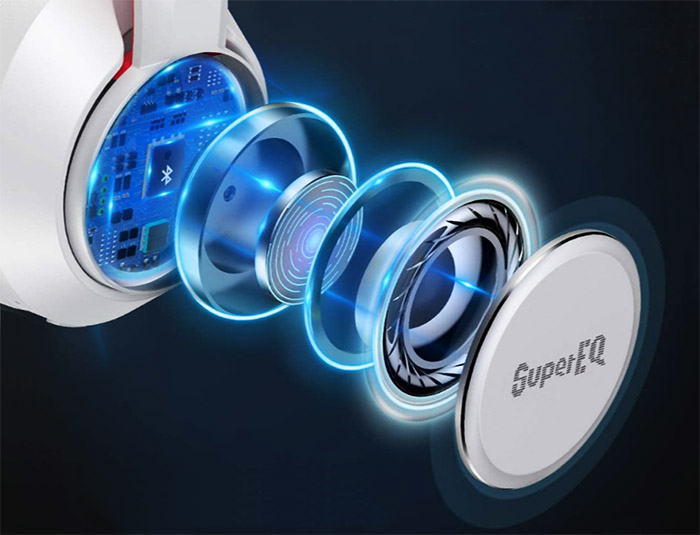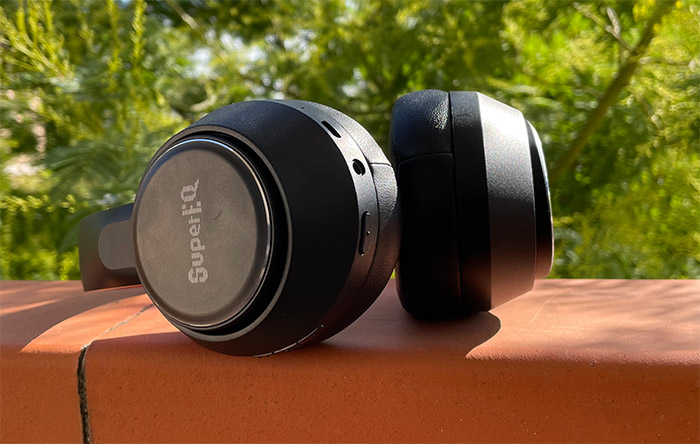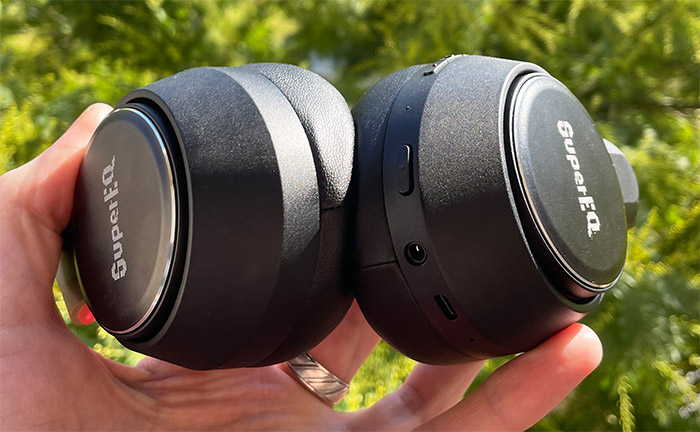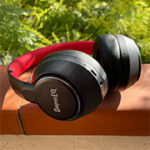The SuperEQ S1 is a budget-friendly pair of ANC headphones developed by a sub-brand of OneOdio and yes, there are a few similarities with the main brand, but there are quite a few differences as well. And that’s more obvious when we look at the design of the SuperEQ headphones since they’re clearly targeted more towards the younger audience (mostly teenagers), sporting a far more playful look than the OneOdio headphones.
I was worried about seeing ANC on a pair of inexpensive headphones when I tested the A30 and the same concerns do apply to the SuperEQ S1 as well, since this is a complicated and costly technology to implement. Being under OneOdio’s guidance could prove to be a good thing since they did alright with the A30 and why not, the SuperEQ S1 could prove to be even better (becoming a formidable competitor to the Anker Soundcore Life Q30).
That being said, the SuperEQ S1 does have an ambient sound mode available as well to allow you to hear what’s going on around you without pausing the music, there’s also Bluetooth support and a small cable inside the package to allow you to connect the headphones using the 3.5mm jack. Sure, most smartphones have already migrated away from the headphones jack, but it’s still a great addition for most of us that still enjoy listening to music using the currently superior wired connection. Lastly, the SuperEQ S1 prides itself with a long lasting battery life (don’t they all?), so let’s check them out and see if they’re both comfortable and capable of creating a good music experience.
Build Quality and Design
I really liked the funky box which seems to have the role of preparing me for a playful pair of headphones. I got the black and red version, so they’re fairly colorful, while the smaller earcups are another indication that the targeted audience are the younger people (or the users will smaller ears). As an adult male, my ears are not small and neither is my head, so I may be a bit at odds with the shape and the size of the earcups. Putting the headphones over my ears I noticed a few things. The earcups are indeed a bit small, but they do manage to cover my ears, so there’s a decent passive noise isolation. The cushions on the earcups is apparently memory foam which does mean that they will fare well in the long term, but, when compared to the OneOdio A30 and the A70, they’re not as soft.
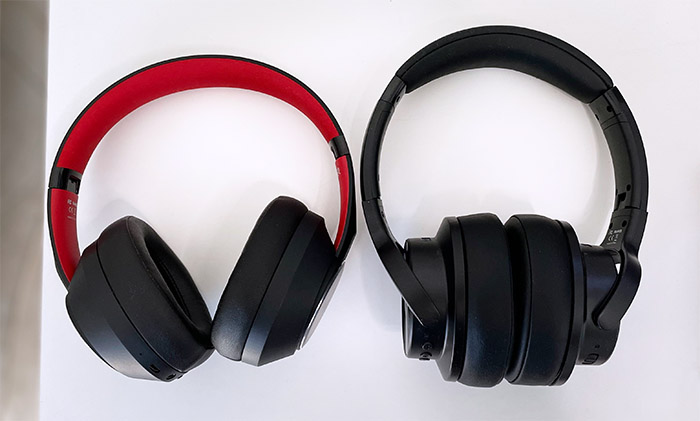
The headband is also not very thick either, so, while I did find the SuperEQ S1 comfortable to wear, all these pressure points do build up and I had to take a break from using them after less than two hours. But again, people with smaller heads and ears could find the headphones more comfortable for a longer period of time. Then again, the soft pad of the headband needed to be at least double the size. What I did like was that the earcups are free to move a few inches in every direction from the slider arm, so I could easily position the earcups over my ears. That’s something I did not see on OneOdio headphones and I think it’s a cool addition. The hinges themselves are metallic and slide very easily, there are some glossy finishes and, besides the soft sections, the rest of the headphones are covered by black plastic parts (with a matte finish).
The plastic could have been a bit better, but for the price tag, it may be good enough to endure a few years of use. What’s a bit worrying is that the plastic feels very similar to what I saw on the Sony WH-1000XM3 which survived only two years before cracking (which is sad for a very expensive pair of headphones). What’s missing is the swivel movement for the earcups which is unfortunate, but there is the option to properly fold the headphones. The outer side of the earcups seems metallic and they simply display the logo (they took a pass on the record-like pattern). There is no touch-sensitive controls, so you will be able to find a few buttons and ports on the edge of the right earcup – yes, the left earcup does not have any buttons (just the noise canceling microphone).
So, on the right earcup, there’s another noise canceling mike, a regular microphone for calls, a charging port which is unfortunately stuck on the microUSB standard and a 3.5mm jack.
Further down, there’s the ANC button which is properly differentiated from the rest of the buttons and will allow you to cycle through the Ambient Sound and the ANC mode. Next to it, there’s the single LED and three buttons, one next to each other. The middle one has a circle protrusion so you can identify it with your finger and it’s used for powering on the headphones, as well as for Playing or Pausing a track. The other two buttons are used for raising or lowering the volume (if you double tap them, it will raise or lower the volume in larger increments), as well as for moving to the next track or returning to the previous one (long press the button for about two seconds).
Similarly to the A30, the SuperEQ S1 do have some external ports for ventilation which should work fairly well if you’re stationary (at your desk or in bed), but your ears will get sweaty if you’re working out (use can simply use a pair of earbuds).
Internal Hardware and Connectivity
Just like the OneOdio A30, the A70 and even the Sony WH-1000XM3, the SuperEQ S1 are equipped with 40mm drivers which could mean that we may get a higher volume and a fuller sound, but it will not really have a say into the sound quality itself. Furthermore, the headphones do make use of Bluetooth 5.0 for the wireless connection, which should ensure that you can go up to about 30 feet from the music source device before experiencing any disconnections.
The S1 actually makes use of some of the ‘more exotic’ features that the Bluetooth 5.0 currently supports which includes the multipoint, so you can simultaneously connect the headphones to two devices, but you can only stream music from one source. In terms of codecs, it’s just the basic ones, so nothing that would make an audiophile excited (not even aptX is supported). The maximum that you’ll get is AAC (as revealed by a Pixel smartphone) and that’s in line with other devices in the same price range.
Sound Quality and ANC
I have recently tested the OneOdio A30 which also ventured into the wonderful world of active noise canceling and it was as expected for an inexpensive pair of headphones – far better than the Bluedio T7 Plus, but way below the excellent performance of the Sony WH-1000XM3. Considering that both SuperEQ and OneOdio headphones are developed under the same roof, I expected a very similar performance and there clearly are some similarities, but I also noticed some fundamental differences. The sound quality was still better with ANC off (this time, with Ambient sound on), but, if I enabled the ANC, there wasn’t that much of a drop in quality as I saw on the A30 and, depending on the type of song, there may be little to no perceptible difference. I did notice that the volume levels don’t reach that high and it did happen more than a couple of times when I wanted to raise it more (when in a heavy trafficked area), it had already reached its maximum. That’s fine in most scenarios, but in a coffee shop (with loud people nearby), it can get mildly annoying.
The ANC does cancel out some droning noise and it did a really good job at canceling my mouse taps and my mechanical keyboard sounds (which is loud) – I could still hear them, but it was 20+ dB less. So, how would it handle loud engine noises, usually from planes? This was the reason why ANC became a thing on the headphones in the first place and brands such as Sony and Bose do a fantastic job, but the budget-friendly headphones can offer some relief as well. I found the performance to be very similar to the A30, although with less hissing (white noise) and I am fairly sure that the SuperEQ S1 did cancel a bit more from the droning sound than the A30, which is great. The engine sounds will still be there and the mandatory crying child will make itself heard, but overall, the plane ride should be a bit more pleasant when wearing the S1 headphones (on shorter trips of a bit more than a couple of hours, they were great). To check out the sound quality, I ran the usual tests which verify some more technical aspects of the headphones.
The first test checks the driver quality which means that a sweeping bass tone will move through various frequencies and there should be no buzzing. Well, I could definitely hear some buzz using both the ANC and the the Ambient Sound modes. Next, I ran a driver matching test and yes, the sound was in the middle of my head, so it’s all good. I usually also like to check how well a pair of headphones is able to create a 3D sound stage and how well everything is differentiated and positioned, and I do that by listening to some binaural recordings. The sound on the SuperEQ S1 is very colorful, but the sibilance is more contained than on the A30 when using the ANC, and while listening to a binaural recording, I could tell where every singer was, which instruments were playing, but I did notice that with ANC on, the sound was more clear, while the Ambient Sound mode was just a little bit muddier.
The instrument differentiation was also good and that was even clearer with a regular song (not binaural). The Bowls from Caribou was the perfect song to check out how good the headphones are with complicated songs and it sounded good, with proper differentiation between sounds and instruments.
Wireless – Ambient Sound and ANC
Moving on with other types of songs, I decided to first check some bass-focused ones using the wireless connection and with the Ambient Sound on. The sound is definitely full and the bass goes somewhat deep, but it’s not incredibly low and vibrant. The bass sound representation is clear, but just don’t expect it ‘to rattle your head’. The mids were alright, but it did seem like the voices sounded a bit low, while the treble songs sounded really good. The instrument differentiation was good, the voices were clear, so yeah, rock (and some bass songs) will sound good on the SuperEQ S1. It’s worth mentioning that the Ambient Sound will slightly amplify the sounds around you, so these tests were made in a fairly quite room.
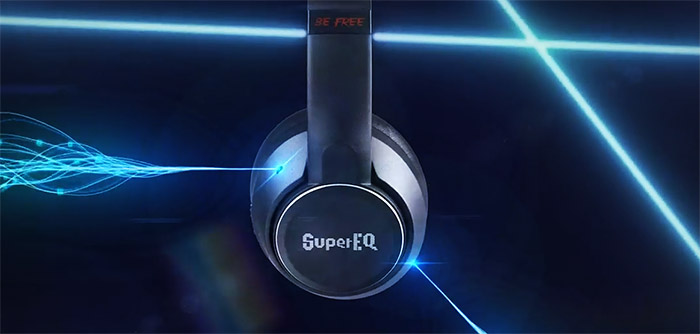
Turning on the ANC will help keep some of the annoying sounds out, but it will also have an impact on the sound quality. It’s not on the same level as on the A30, but the bass does get a bit muted. The treble songs also sounded a bit more distant, but Lateralus from Tool still maintained the same vibrant tonality as with the Ambient Sound on. I also listened to Empire of the Sun to check if the sibilance gets too aggressive for my ears and fortunately, it’s not that bad and SuperEQ managed to keep the sounds fairly balanced at all frequencies.
Wired – Ambient Sound and ANC
Moving on to the wired connection and, to my surprise, here’s where things got a bit weird. Besides the fact that you can’t move seamlessly between wired and wireless (the headphones will turn off, but I can live with that), there is a volume level difference between Ambient Sound mode and the ANC on mode. And it’s annoying to have to constantly adjust it. The Ambient Sound mode will be essentially the same as with the wireless connection which is good news. Furthermore, there’s usually a less impressive sound quality with Bluetooth, but it’s not the same with ANC. No, the wired ANC on mode is not good since it has the same aggressive treble and muted bass that I saw on A30 (with the wireless connection and ANC on), and the volume difference does not help either. So, it’s best to use the SuperEQ S1 wirelessly, the way the manufacturer most likely intended.
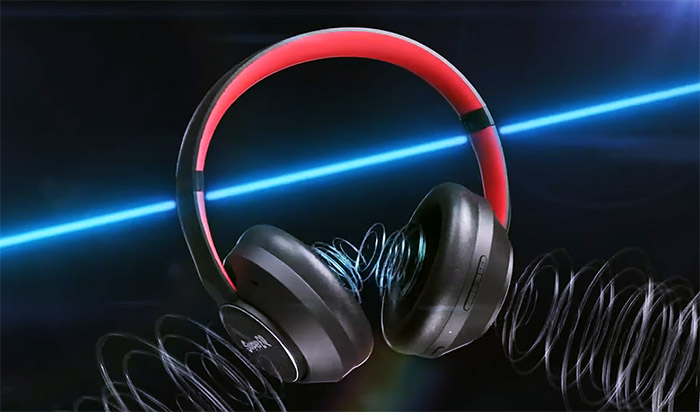
Call Quality
I really like what OneOdio has done with its headphones in terms of call quality since both the A70 and the A30 have really good dedicated microphones which made the voices sound as good as on the smartphone itself (using the speaker mode). This also seems to be the case with the SuperEQ S1 since I could clearly hear the voice of the person on the other end and most importantly, the other person could properly hear my voice even if I was in a more crowded area. It’s not perfect, but it’s far better than with some other headphones in the same price range and a bit above.
Battery Life
The SuperEQ S1 have a 380mAh battery which really isn’t that much to brag about, since the OneOdio A70 has a 950mAh battery and the A30 comes with a 500mAh battery. Even so, the manufacturer says that the user should get 40 hours with both ANC and Bluetooth, while Bluetooth + Ambient mode is set to last for up to 45 hours; lastly, the advertised time for ANC only (on a wired connection) is 50 hours. I mostly tested the headphones with ANC and Bluetooth and no, I didn’t get 40 hours, but about half that number. With ANC off, I could squeeze in 4-5 hours more. Recharging the S1 from 0 to 100% doesn’t take more than a couple of hours.
The Conclusion
I did expect the SuperEQ S1 to not be that much different from the OneOdio A30, but, while they clearly share some common elements, these are two entirely different pairs of headphones. The design is different and more focused towards the younger people (mostly teenagers), so I didn’t really find the S1 that much comfortable, but that may not really be the case with people with smaller heads and ears. The sound quality was really balanced and I could listen to all types of music without really noticing some major weaknesses. Sure enough, the ANC does have some impact on the sound quality, but it’s far more mild than what I saw on other headphones in the same price range. And, to be honest, I did find the ANC on the S1 to work slightly better than on the A30, which is definitely a plus. That being said, considering their price tag, the SuperEQ S1 do manage to offer good value for the money, so, if you mostly prefer using your headphones wirelessly and with ANC on (as most people do), then you should definitely give these headphones a chance.
SuperEQ S1
-Pros
- The music sounds decently good with ANC on and especially with Ambient Sound mode enabled
- Nice, colorful design
- Fairly intuitive controls
- Very good call quality
Cons
- They could be comfortable for people with smaller head and ears, but for the rest of us, not that much
- Small battery
- There is a discrepancy in the volume level between ANC on and off when connected via cable
- The headband cushion could have been thicker and softer

Mark is a graduate in Computer Science, having gathered valuable experience over the years working in IT as a programmer. Mark is also the main tech writer for MBReviews.com, covering not only his passion, the networking devices, but also other cool electronic gadgets that you may find useful for your every day life.

